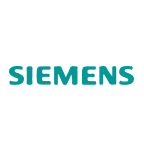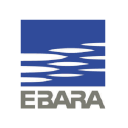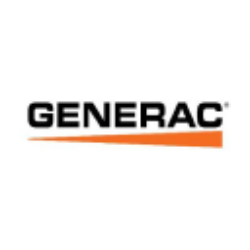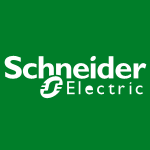SBGSF

Schneider Electric S.E.
SBGSF
(3.0)247,18 USD
16.26% ROA
14.28% ROE
27.47x PER
131.591.178.016,08 USD
56.82% DER
1.47% Yield
10.6% NPM
Schneider Electric S.E. Stock Analysis
Schneider Electric S.E. Fundamental Analysis
Fundamental analysis in stock investing is like studying the foundation of a house before buying it. It involves looking at a company's financial health, like its earnings, assets, and debts, to determine if it's a good investment based on its fundamental strength and potential for growth.
| # | Analysis | Rating |
|---|---|---|
| 1 |
ROA
This stock has a great ability to make a lot of money from the things it owns, which makes it a really good investment for smart investors. |
|
| 2 |
DER
The stock has a low debt to equity ratio (41%), which means it has a small amount of debt compared to the ownership it holds |
|
| 3 |
Assets Growth
With continuous growth in revenue over the last five years, this company has proven to be a lucrative investment option, showcasing its strong financial performance. |
|
| 4 |
Dividend
Investors can take comfort in the company's unwavering commitment to dividends, as it has consistently distributed payouts over the past five years, ensuring a reliable income stream. |
|
| 5 |
ROE
The stock's ROE falls within an average range (13.94%), demonstrating satisfactory profitability and efficiency in utilizing shareholders' equity. |
|
| 6 |
Revenue Growth
Company's revenue has experienced consistent growth over the last three years, indicating a favorable financial trajectory and making it an attractive investment choice. |
|
| 7 |
Net Profit Growth
Over the last three years, this company has consistently achieved net profit growth, indicating a favorable financial performance and making it an attractive investment option. |
|
| 8 |
Buffet Intrinsic Value
The company's stock seems undervalued (1.823) by Warren Buffett's formula, indicating a promising investment opportunity as its intrinsic value exceeds the market price. |
|
| 9 |
PBV
The stock's high Price-to-Book Value (P/BV) ratio (3.62x) suggests it's overvalued, potentially making it an expensive investment. |
|
| 10 |
Graham Number
Based on the Graham number, this company's stock price appears to be higher than its intrinsic value, signaling a potentially unfavorable investment choice. |
|
| 11 |
Dividend Growth
The company's dividend growth has shown no improvement in the past three years, making it a less attractive investment option for those seeking increasing returns. |
Schneider Electric S.E. Technical Analysis
Technical analysis in stock investing is like reading the patterns on a weather map to predict future weather conditions. It involves studying past stock price movements and trading volumes to make predictions about where a stock's price might go next, without necessarily looking at the company's financial health.
| # | Analysis | Recommendation |
|---|---|---|
| 1 | Awesome Oscillator | Buy |
| 2 | MACD | Buy |
| 3 | RSI | Hold |
| 4 | Stoch RSI | Sell |
Schneider Electric S.E. Price Chart
Financial Statements
Financial statements are like report cards for companies. They show how much money a company makes (income statement), what it owns and owes (balance sheet), and where it spends its money (cash flow statement), helping stock investors understand if a company is healthy and worth investing in.
Income Statements
An income statement for a company is like a scoreboard for its profits and losses. It shows how much money the company made (revenue) and how much it spent to make that money (expenses), helping stock investors see if a company is making a profit or not.
Revenue in stock investing is the total amount of money a company earns from its sales, and it's a key factor that investors consider to assess a company's financial performance and growth potential.
| Year | Revenue | Growth |
|---|---|---|
| 2001 | 9.828.200.000 | |
| 2002 | 9.060.500.000 | -8.47% |
| 2003 | 8.780.300.000 | -3.19% |
| 2004 | 10.365.300.000 | 15.29% |
| 2005 | 11.678.800.000 | 11.25% |
| 2006 | 13.729.700.000 | 14.94% |
| 2007 | 17.308.600.000 | 20.68% |
| 2008 | 18.311.000.000 | 5.47% |
| 2009 | 15.793.000.000 | -15.94% |
| 2010 | 19.580.000.000 | 19.34% |
| 2011 | 22.387.000.000 | 12.54% |
| 2012 | 23.946.000.000 | 6.51% |
| 2013 | 23.551.000.000 | -1.68% |
| 2014 | 24.939.000.000 | 5.57% |
| 2015 | 26.640.000.000 | 6.39% |
| 2016 | 24.693.000.000 | -7.88% |
| 2017 | 24.743.000.000 | 0.2% |
| 2018 | 25.720.000.000 | 3.8% |
| 2019 | 27.158.000.000 | 5.29% |
| 2020 | 25.159.000.000 | -7.95% |
| 2021 | 28.905.000.000 | 12.96% |
| 2022 | 34.176.000.000 | 15.42% |
| 2023 | 35.902.000.000 | 4.81% |
| 2024 | 36.346.000.000 | 1.22% |
Research and Development Expenses are the costs a company incurs to create and improve its products or services, which can be important for investors to evaluate a company's innovation and potential for future growth.
| Year | Research and Development Expenses | Growth |
|---|---|---|
| 2001 | 512.700.000 | |
| 2002 | 472.700.000 | -8.46% |
| 2003 | 494.000.000 | 4.31% |
| 2004 | 535.200.000 | 7.7% |
| 2005 | 273.700.000 | -95.54% |
| 2006 | 327.600.000 | 16.45% |
| 2007 | 417.100.000 | 21.46% |
| 2008 | 402.000.000 | -3.76% |
| 2009 | 403.000.000 | 0.25% |
| 2010 | 450.000.000 | 10.44% |
| 2011 | 539.000.000 | 16.51% |
| 2012 | 507.000.000 | -6.31% |
| 2013 | 535.000.000 | 5.23% |
| 2014 | 567.000.000 | 5.64% |
| 2015 | 565.000.000 | -0.35% |
| 2016 | 535.000.000 | -5.61% |
| 2017 | 501.000.000 | -6.79% |
| 2018 | 597.000.000 | 16.08% |
| 2019 | 657.000.000 | 9.13% |
| 2020 | 718.000.000 | 8.5% |
| 2021 | 855.000.000 | 16.02% |
| 2022 | 1.040.000.000 | 17.79% |
| 2023 | 1.939.000.000 | 46.36% |
| 2024 | 2.062.000.000 | 5.97% |
General and Administrative Expenses are the costs a company incurs to run its day-to-day operations, such as office rent, salaries, and utilities, which investors consider to understand a company's overall efficiency and management effectiveness.
| Year | General and Administrative Expenses | Growth |
|---|---|---|
| 2001 | 2.320.600.000 | |
| 2002 | 2.242.900.000 | -3.46% |
| 2003 | 2.215.800.000 | -1.22% |
| 2004 | 2.554.300.000 | 13.25% |
| 2005 | 2.812.800.000 | 9.19% |
| 2006 | 3.234.800.000 | 13.05% |
| 2007 | 3.978.100.000 | 18.68% |
| 2008 | 4.120.000.000 | 3.44% |
| 2009 | 3.770.000.000 | -9.28% |
| 2010 | 4.269.000.000 | 11.69% |
| 2011 | 4.658.000.000 | 8.35% |
| 2012 | 5.035.000.000 | 7.49% |
| 2013 | 4.944.000.000 | -1.84% |
| 2014 | 5.377.000.000 | 8.05% |
| 2015 | 5.639.000.000 | 4.65% |
| 2016 | 5.375.000.000 | -4.91% |
| 2017 | 5.346.000.000 | -0.54% |
| 2018 | 5.572.000.000 | 4.06% |
| 2019 | 5.840.000.000 | 4.59% |
| 2020 | 5.512.000.000 | -5.95% |
| 2021 | 6.001.000.000 | 8.15% |
| 2022 | 6.819.000.000 | 12% |
| 2023 | 7.432.000.000 | 8.25% |
| 2024 | 0 | 0% |
EBITDA stands for Earnings Before Interest, Taxes, Depreciation, and Amortization. It is a measure that helps stock investors analyze a company's profitability by looking at its earnings without considering certain expenses. This helps to get a clearer picture of the company's financial performance and its ability to generate cash flow.
| Year | EBITDA | Growth |
|---|---|---|
| 2001 | 1.636.900.000 | |
| 2002 | 1.582.600.000 | -3.43% |
| 2003 | 1.541.800.000 | -2.65% |
| 2004 | 1.648.800.000 | 6.49% |
| 2005 | 1.933.400.000 | 14.72% |
| 2006 | 2.378.200.000 | 18.7% |
| 2007 | 2.962.000.000 | 19.71% |
| 2008 | 3.108.000.000 | 4.7% |
| 2009 | 2.101.000.000 | -47.93% |
| 2010 | 3.503.000.000 | 40.02% |
| 2011 | 3.538.000.000 | 0.99% |
| 2012 | 3.703.000.000 | 4.46% |
| 2013 | 3.801.000.000 | 2.58% |
| 2014 | 3.739.000.000 | -1.66% |
| 2015 | 3.174.000.000 | -17.8% |
| 2016 | 3.733.000.000 | 14.97% |
| 2017 | 3.968.000.000 | 5.92% |
| 2018 | 4.242.000.000 | 6.46% |
| 2019 | 4.534.000.000 | 6.44% |
| 2020 | 4.230.000.000 | -7.19% |
| 2021 | 5.745.000.000 | 26.37% |
| 2022 | 6.401.000.000 | 10.25% |
| 2023 | 7.340.000.000 | 12.79% |
| 2024 | 7.470.000.000 | 1.74% |
Gross profit is the money a company makes from selling its products or services after subtracting the cost of producing or providing them, and it is an important measure for investors to understand a company's profitability.
| Year | Gross Profit | Growth |
|---|---|---|
| 2001 | 3.949.600.000 | |
| 2002 | 3.755.300.000 | -5.17% |
| 2003 | 3.717.200.000 | -1.02% |
| 2004 | 4.400.200.000 | 15.52% |
| 2005 | 4.755.000.000 | 7.46% |
| 2006 | 5.679.100.000 | 16.27% |
| 2007 | 7.098.600.000 | 20% |
| 2008 | 7.415.000.000 | 4.27% |
| 2009 | 6.221.000.000 | -19.19% |
| 2010 | 7.738.000.000 | 19.6% |
| 2011 | 8.429.000.000 | 8.2% |
| 2012 | 9.057.000.000 | 6.93% |
| 2013 | 8.891.000.000 | -1.87% |
| 2014 | 9.407.000.000 | 5.49% |
| 2015 | 9.845.000.000 | 4.45% |
| 2016 | 9.390.000.000 | -4.85% |
| 2017 | 9.498.000.000 | 1.14% |
| 2018 | 10.043.000.000 | 5.43% |
| 2019 | 10.735.000.000 | 6.45% |
| 2020 | 10.156.000.000 | -5.7% |
| 2021 | 11.843.000.000 | 14.24% |
| 2022 | 13.876.000.000 | 14.65% |
| 2023 | 15.012.000.000 | 7.57% |
| 2024 | 15.778.000.000 | 4.85% |
Net income in stock investing is like the money a company actually gets to keep as profit after paying all its bills, and it's an important measure to understand how well a company is doing financially.
| Year | Net Profit | Growth |
|---|---|---|
| 2001 | -964.000.000 | |
| 2002 | 446.900.000 | 315.71% |
| 2003 | 454.300.000 | 1.63% |
| 2004 | 594.700.000 | 23.61% |
| 2005 | 1.029.500.000 | 42.23% |
| 2006 | 1.346.600.000 | 23.55% |
| 2007 | 1.621.500.000 | 16.95% |
| 2008 | 1.723.000.000 | 5.89% |
| 2009 | 894.000.000 | -92.73% |
| 2010 | 1.796.000.000 | 50.22% |
| 2011 | 1.904.000.000 | 5.67% |
| 2012 | 1.840.000.000 | -3.48% |
| 2013 | 1.888.000.000 | 2.54% |
| 2014 | 1.941.000.000 | 2.73% |
| 2015 | 1.407.000.000 | -37.95% |
| 2016 | 1.750.000.000 | 19.6% |
| 2017 | 2.150.000.000 | 18.6% |
| 2018 | 2.334.000.000 | 7.88% |
| 2019 | 2.413.000.000 | 3.27% |
| 2020 | 2.126.000.000 | -13.5% |
| 2021 | 3.204.000.000 | 33.65% |
| 2022 | 3.477.000.000 | 7.85% |
| 2023 | 4.003.000.000 | 13.14% |
| 2024 | 3.764.000.000 | -6.35% |
EPS, or earnings per share, is a measure that shows how much profit a company has earned for each outstanding share of its stock, and it is important for stock investors as it helps understand the profitability of a company and compare it with other companies in the market.
| Year | Earning per Share (EPS) | Growth |
|---|---|---|
| 2001 | -2 | |
| 2002 | 1 | 0% |
| 2003 | 1 | 0% |
| 2004 | 2 | 100% |
| 2005 | 2 | 50% |
| 2006 | 3 | 0% |
| 2007 | 3 | 33.33% |
| 2008 | 4 | 0% |
| 2009 | 2 | -200% |
| 2010 | 3 | 66.67% |
| 2011 | 3 | 0% |
| 2012 | 3 | 0% |
| 2013 | 3 | 0% |
| 2014 | 3 | 0% |
| 2015 | 2 | -50% |
| 2016 | 3 | 33.33% |
| 2017 | 4 | 0% |
| 2018 | 4 | 25% |
| 2019 | 4 | 0% |
| 2020 | 4 | -33.33% |
| 2021 | 6 | 40% |
| 2022 | 6 | 16.67% |
| 2023 | 7 | 14.29% |
| 2024 | 7 | -16.67% |
Cashflow Statements
Cashflow statements show the movement of money in and out of a company, helping stock investors understand how much money a company makes and spends. By examining cashflow statements, investors can assess if a company is generating enough cash to pay its bills, invest in growth, and provide returns to stockholders.
Free cash flow is the leftover cash that a company generates after covering its operating expenses and capital expenditures, which is important for stock investors as it shows how much money a company has available to invest in growth, pay dividends, or reduce debt.
| Year | Free Cashflow | Growth |
|---|---|---|
| 2001 | 491.000.000 | |
| 2002 | 555.500.000 | 11.61% |
| 2003 | 939.200.000 | 40.85% |
| 2004 | 790.100.000 | -18.87% |
| 2005 | 802.900.000 | 1.59% |
| 2006 | 1.030.400.000 | 22.08% |
| 2007 | 1.451.300.000 | 29% |
| 2008 | 1.714.000.000 | 15.33% |
| 2009 | 1.942.000.000 | 11.74% |
| 2010 | 1.647.000.000 | -17.91% |
| 2011 | 1.440.000.000 | -14.38% |
| 2012 | 2.014.000.000 | 28.5% |
| 2013 | 2.079.000.000 | 3.13% |
| 2014 | 1.662.000.000 | -25.09% |
| 2015 | 1.927.000.000 | 13.75% |
| 2016 | 2.111.000.000 | 8.72% |
| 2017 | 2.192.000.000 | 3.7% |
| 2018 | 2.048.000.000 | -7.03% |
| 2019 | 3.438.000.000 | 40.43% |
| 2020 | 3.618.000.000 | 4.98% |
| 2021 | 2.740.000.000 | -32.04% |
| 2022 | 3.261.000.000 | 15.98% |
| 2023 | 4.542.000.000 | 28.2% |
| 2024 | 550.000.000 | -725.82% |
Operating cash flow represents the cash generated or consumed by a company's day-to-day operations, excluding external investing or financing activities, and is crucial for stock investors as it shows how much cash a company is generating from its core business operations.
| Year | Operating Cashflow | Growth |
|---|---|---|
| 2001 | 942.600.000 | |
| 2002 | 932.800.000 | -1.05% |
| 2003 | 1.254.200.000 | 25.63% |
| 2004 | 1.122.600.000 | -11.72% |
| 2005 | 1.324.700.000 | 15.26% |
| 2006 | 1.587.900.000 | 16.58% |
| 2007 | 2.090.100.000 | 24.03% |
| 2008 | 2.428.000.000 | 13.92% |
| 2009 | 2.547.000.000 | 4.67% |
| 2010 | 2.262.000.000 | -12.6% |
| 2011 | 2.252.000.000 | -0.44% |
| 2012 | 2.801.000.000 | 19.6% |
| 2013 | 2.901.000.000 | 3.45% |
| 2014 | 2.533.000.000 | -14.53% |
| 2015 | 2.832.000.000 | 10.56% |
| 2016 | 2.970.000.000 | 4.65% |
| 2017 | 2.941.000.000 | -0.99% |
| 2018 | 2.872.000.000 | -2.4% |
| 2019 | 4.282.000.000 | 32.93% |
| 2020 | 4.435.000.000 | 3.45% |
| 2021 | 3.616.000.000 | -22.65% |
| 2022 | 4.354.000.000 | 16.95% |
| 2023 | 5.907.000.000 | 26.29% |
| 2024 | 762.500.000 | -674.69% |
Capex, short for capital expenditures, refers to the money a company spends on acquiring or upgrading tangible assets like buildings, equipment, or technology, which is important for stock investors as it indicates how much a company is investing in its infrastructure to support future growth and profitability.
| Year | Capital Expenditure | Growth |
|---|---|---|
| 2001 | 451.600.000 | |
| 2002 | 377.300.000 | -19.69% |
| 2003 | 315.000.000 | -19.78% |
| 2004 | 332.500.000 | 5.26% |
| 2005 | 521.800.000 | 36.28% |
| 2006 | 557.500.000 | 6.4% |
| 2007 | 638.800.000 | 12.73% |
| 2008 | 714.000.000 | 10.53% |
| 2009 | 605.000.000 | -18.02% |
| 2010 | 615.000.000 | 1.63% |
| 2011 | 812.000.000 | 24.26% |
| 2012 | 787.000.000 | -3.18% |
| 2013 | 822.000.000 | 4.26% |
| 2014 | 871.000.000 | 5.63% |
| 2015 | 905.000.000 | 3.76% |
| 2016 | 859.000.000 | -5.36% |
| 2017 | 749.000.000 | -14.69% |
| 2018 | 824.000.000 | 9.1% |
| 2019 | 844.000.000 | 2.37% |
| 2020 | 817.000.000 | -3.3% |
| 2021 | 876.000.000 | 6.74% |
| 2022 | 1.093.000.000 | 19.85% |
| 2023 | 1.365.000.000 | 19.93% |
| 2024 | 212.500.000 | -542.35% |
Balance Sheet
Balance sheets provide a snapshot of a company's financial health and its assets (such as cash, inventory, and property) and liabilities (like debts and obligations) at a specific point in time. For stock investors, balance sheets help assess the company's overall worth and evaluate its ability to meet financial obligations and support future growth.
Equity refers to the ownership interest or stake that shareholders have in a company, representing their claim on its assets and earnings after all debts and liabilities are paid.
| Year | Equity | Growth |
|---|---|---|
| 2001 | 8.380.500.000 | |
| 2002 | 7.784.700.000 | -7.65% |
| 2003 | 7.658.700.000 | -1.65% |
| 2004 | 7.575.100.000 | -1.1% |
| 2005 | 8.337.500.000 | 9.14% |
| 2006 | 8.838.100.000 | 5.66% |
| 2007 | 10.313.700.000 | 14.31% |
| 2008 | 11.051.000.000 | 6.67% |
| 2009 | 11.888.000.000 | 7.04% |
| 2010 | 14.989.000.000 | 20.69% |
| 2011 | 16.090.000.000 | 6.84% |
| 2012 | 16.816.000.000 | 4.32% |
| 2013 | 17.363.000.000 | 3.15% |
| 2014 | 20.151.000.000 | 13.84% |
| 2015 | 21.289.000.000 | 5.35% |
| 2016 | 20.653.000.000 | -3.08% |
| 2017 | 19.942.000.000 | -3.57% |
| 2018 | 22.264.000.000 | 10.43% |
| 2019 | 23.140.000.000 | 3.79% |
| 2020 | 23.727.000.000 | 2.47% |
| 2021 | 28.109.000.000 | 15.59% |
| 2022 | 26.094.000.000 | -7.72% |
| 2023 | 27.168.000.000 | 3.95% |
| 2023 | 25.656.000.000 | -5.89% |
| 2024 | 28.395.000.000 | 9.65% |
Assets represent the valuable resources that a company owns, such as cash, inventory, property, and equipment, and understanding a company's assets helps investors assess its value and potential for generating future profits.
| Year | Assets | Growth |
|---|---|---|
| 2001 | 15.250.300.000 | |
| 2002 | 13.769.500.000 | -10.75% |
| 2003 | 13.920.800.000 | 1.09% |
| 2004 | 13.045.300.000 | -6.71% |
| 2005 | 16.614.800.000 | 21.48% |
| 2006 | 18.964.300.000 | 12.39% |
| 2007 | 23.267.700.000 | 18.5% |
| 2008 | 24.807.000.000 | 6.21% |
| 2009 | 25.649.000.000 | 3.28% |
| 2010 | 31.051.000.000 | 17.4% |
| 2011 | 35.886.000.000 | 13.47% |
| 2012 | 36.156.000.000 | 0.75% |
| 2013 | 36.988.000.000 | 2.25% |
| 2014 | 41.158.000.000 | 10.13% |
| 2015 | 42.577.000.000 | 3.33% |
| 2016 | 41.851.000.000 | -1.73% |
| 2017 | 39.849.000.000 | -5.02% |
| 2018 | 42.259.000.000 | 5.7% |
| 2019 | 45.003.000.000 | 6.1% |
| 2020 | 49.482.000.000 | 9.05% |
| 2021 | 54.547.000.000 | 9.29% |
| 2022 | 58.368.000.000 | 6.55% |
| 2023 | 58.899.000.000 | 0.9% |
| 2023 | 58.697.000.000 | -0.34% |
| 2024 | 60.893.000.000 | 3.61% |
Liabilities refer to the financial obligations or debts that a company owes to creditors or external parties, and understanding a company's liabilities is important for investors as it helps assess the company's financial risk and ability to meet its obligations.
| Year | Liabilities | Growth |
|---|---|---|
| 2001 | 6.790.500.000 | |
| 2002 | 5.908.600.000 | -14.93% |
| 2003 | 6.187.200.000 | 4.5% |
| 2004 | 5.401.200.000 | -14.55% |
| 2005 | 8.277.300.000 | 34.75% |
| 2006 | 10.126.200.000 | 18.26% |
| 2007 | 12.954.000.000 | 21.83% |
| 2008 | 13.756.000.000 | 5.83% |
| 2009 | 13.761.000.000 | 0.04% |
| 2010 | 16.062.000.000 | 14.33% |
| 2011 | 19.796.000.000 | 18.86% |
| 2012 | 19.340.000.000 | -2.36% |
| 2013 | 19.625.000.000 | 1.45% |
| 2014 | 21.007.000.000 | 6.58% |
| 2015 | 21.288.000.000 | 1.32% |
| 2016 | 21.198.000.000 | -0.42% |
| 2017 | 19.907.000.000 | -6.49% |
| 2018 | 19.995.000.000 | 0.44% |
| 2019 | 21.863.000.000 | 8.54% |
| 2020 | 25.755.000.000 | 15.11% |
| 2021 | 26.438.000.000 | 2.58% |
| 2022 | 32.274.000.000 | 18.08% |
| 2023 | 31.731.000.000 | -1.71% |
| 2023 | 33.041.000.000 | 3.96% |
| 2024 | 32.498.000.000 | -1.67% |
Schneider Electric S.E. Financial Ratio (TTM)
Valuation Metrics
- Revenue per Share
- 80.4
- Net Income per Share
- 8.56
- Price to Earning Ratio
- 27.47x
- Price To Sales Ratio
- 2.89x
- POCF Ratio
- 16.23
- PFCF Ratio
- 19.31
- Price to Book Ratio
- 4.83
- EV to Sales
- 3.14
- EV Over EBITDA
- 15.75
- EV to Operating CashFlow
- 17.41
- EV to FreeCashFlow
- 20.97
- Earnings Yield
- 0.04
- FreeCashFlow Yield
- 0.05
- Market Cap
- 131,59 Bil.
- Enterprise Value
- 142,91 Bil.
- Graham Number
- 96.87
- Graham NetNet
- -33.29
Income Statement Metrics
- Net Income per Share
- 8.56
- Income Quality
- 1.69
- ROE
- 0.18
- Return On Assets
- 0.06
- Return On Capital Employed
- 0.14
- Net Income per EBT
- 0.73
- EBT Per Ebit
- 0.86
- Ebit per Revenue
- 0.17
- Effective Tax Rate
- 0.23
Margins
- Sales, General, & Administrative to Revenue
- 0
- Research & Developement to Revenue
- 0.05
- Stock Based Compensation to Revenue
- 0
- Gross Profit Margin
- 0.43
- Operating Profit Margin
- 0.17
- Pretax Profit Margin
- 0.14
- Net Profit Margin
- 0.11
Dividends
- Dividend Yield
- 0.01
- Dividend Yield %
- 1.47
- Payout Ratio
- 0.4
- Dividend Per Share
- 3.8
Operating Metrics
- Operating Cashflow per Share
- 14.48
- Free CashFlow per Share
- 12.02
- Capex to Operating CashFlow
- 0.17
- Capex to Revenue
- 0.03
- Capex to Depreciation
- 0.86
- Return on Invested Capital
- 0.13
- Return on Tangible Assets
- 0.16
- Days Sales Outstanding
- 71.03
- Days Payables Outstanding
- 108.2
- Days of Inventory on Hand
- 72.11
- Receivables Turnover
- 5.14
- Payables Turnover
- 3.37
- Inventory Turnover
- 5.06
- Capex per Share
- 2.46
Balance Sheet
- Cash per Share
- 7,72
- Book Value per Share
- 50,09
- Tangible Book Value per Share
- -4.69
- Shareholders Equity per Share
- 48.73
- Interest Debt per Share
- 28.14
- Debt to Equity
- 0.57
- Debt to Assets
- 0.26
- Net Debt to EBITDA
- 1.25
- Current Ratio
- 1.21
- Tangible Asset Value
- -2,66 Bil.
- Net Current Asset Value
- -11,63 Bil.
- Invested Capital
- 39128000000
- Working Capital
- 3,66 Bil.
- Intangibles to Total Assets
- 0.51
- Average Receivables
- 8,87 Bil.
- Average Payables
- 7,80 Bil.
- Average Inventory
- 5199000000
- Debt to Market Cap
- 0.12
Dividends
Dividends in stock investing are like rewards that companies give to their shareholders. They are a portion of the company's profits distributed to investors, typically in the form of cash payments, as a way for them to share in the company's success.
| Year | Dividends | Growth |
|---|---|---|
| 2014 | 3 | |
| 2015 | 2 | 0% |
| 2016 | 2 | 0% |
| 2017 | 2 | 0% |
| 2018 | 3 | 0% |
| 2019 | 3 | 0% |
| 2020 | 3 | 0% |
| 2021 | 3 | 33.33% |
| 2022 | 3 | 0% |
| 2023 | 3 | 0% |
| 2024 | 4 | 0% |
Schneider Electric S.E. Profile
About Schneider Electric S.E.
Schneider Electric S.E. provides energy and automation digital solutions worldwide. It operates through two segments, Energy Management and Industrial Automation. The company offers busway and cable support products, circuit breakers and switches, contactors and protection relays, electrical protection and control products, energy management software solutions, transfer switches, surge protection and power conditioning products, power monitoring and control products, power quality and power factor correction products, pushbuttons, switches, pilot lights and joysticks, software products, and switchboards and enclosures. It also provides access control, building management, fire detection, sensors and room units, valve and valve actuator, and variable and frequency speed drive. In addition, the company offers feeder automation, grid automation and SCADA software products, medium voltage switchgears and transformers, outdoor equipment, substation automation products, and switchgear components. Further, it provides critical power and cooling services, data center software, IT power distribution products, prefabricated data center modules, racks and accessories, and security and environmental monitoring products; home automation and security, installation materials and systems, light switches and electrical sockets, and uninterruptible power supply products; and human machine interface, industrial automation software, industrial communication, measurement and instrumentation, motion control and robotics, signaling units, programmable logic and automation controllers, power supply and protection, process control and safety, RFID systems, signaling devices, and other industrial automation and control products, as well as solar and energy storage. The company was founded in 1836 and is headquartered in Rueil-Malmaison, France.
- CEO
- Mr. Olivier Blum
- Employee
- 164.640
- Address
-
35 rue Joseph Monier
Rueil-Malmaison, 92506
Schneider Electric S.E. Executives & BODs
| # | Name | Age |
|---|---|---|
| 1 |
Mr. Olivier Blum Chief Executive Officer & Acting Executive Vice President of Energy Management |
70 |
| 2 |
Ms. Hilary Barbara Maxson B.Sc., M.B.A. Chief Financial Officer |
70 |
| 3 |
Ms. Chris Leong Executive Vice President & Chief Marketing Officer |
70 |
| 4 |
Carina Ho Senior Vice President of Strategy & Business Development - China Operations |
70 |
| 5 |
Mr. Rob McKernan Senior Vice President of ITD Europe & Global IT Channels |
70 |
| 6 |
Mr. Joszef Spilko President of Hungary Unit |
70 |
| 7 |
Ms. Annette K. Clayton Chairwoman of North America |
70 |
| 8 |
Mr. Amit Bhalla Senior Vice President & Head of Investor Relations |
70 |
| 9 |
Mr. Christophe Campagne Senior Vice President of Global Projects Execution Transformation |
70 |
| 10 |
Ms. Charise Le Chief Human Resources Officer |
70 |
















